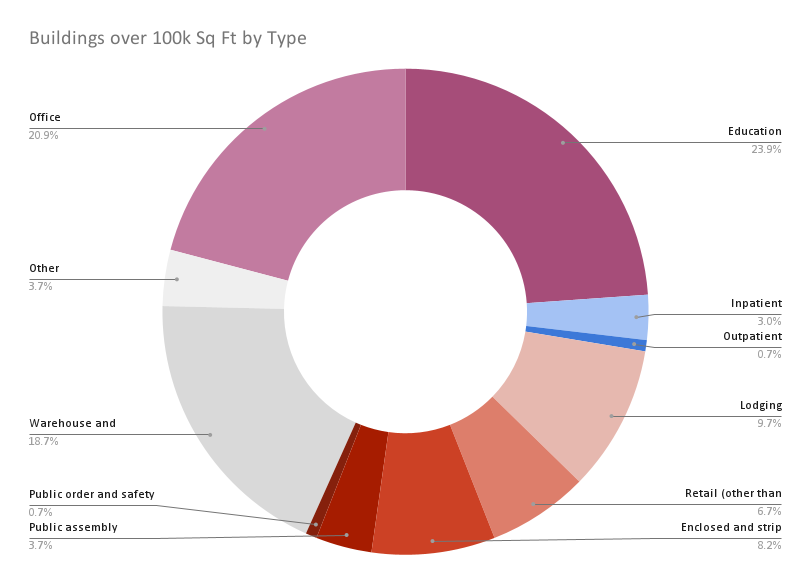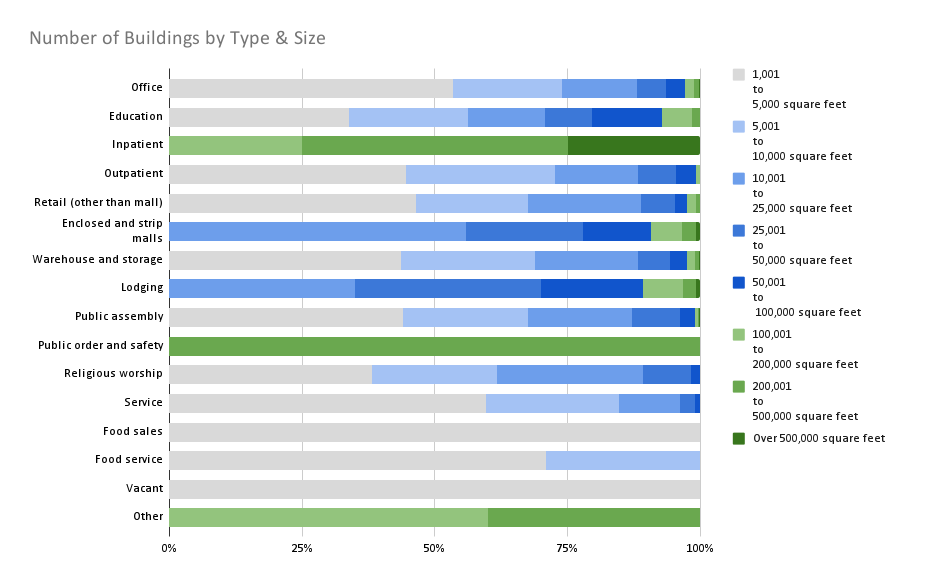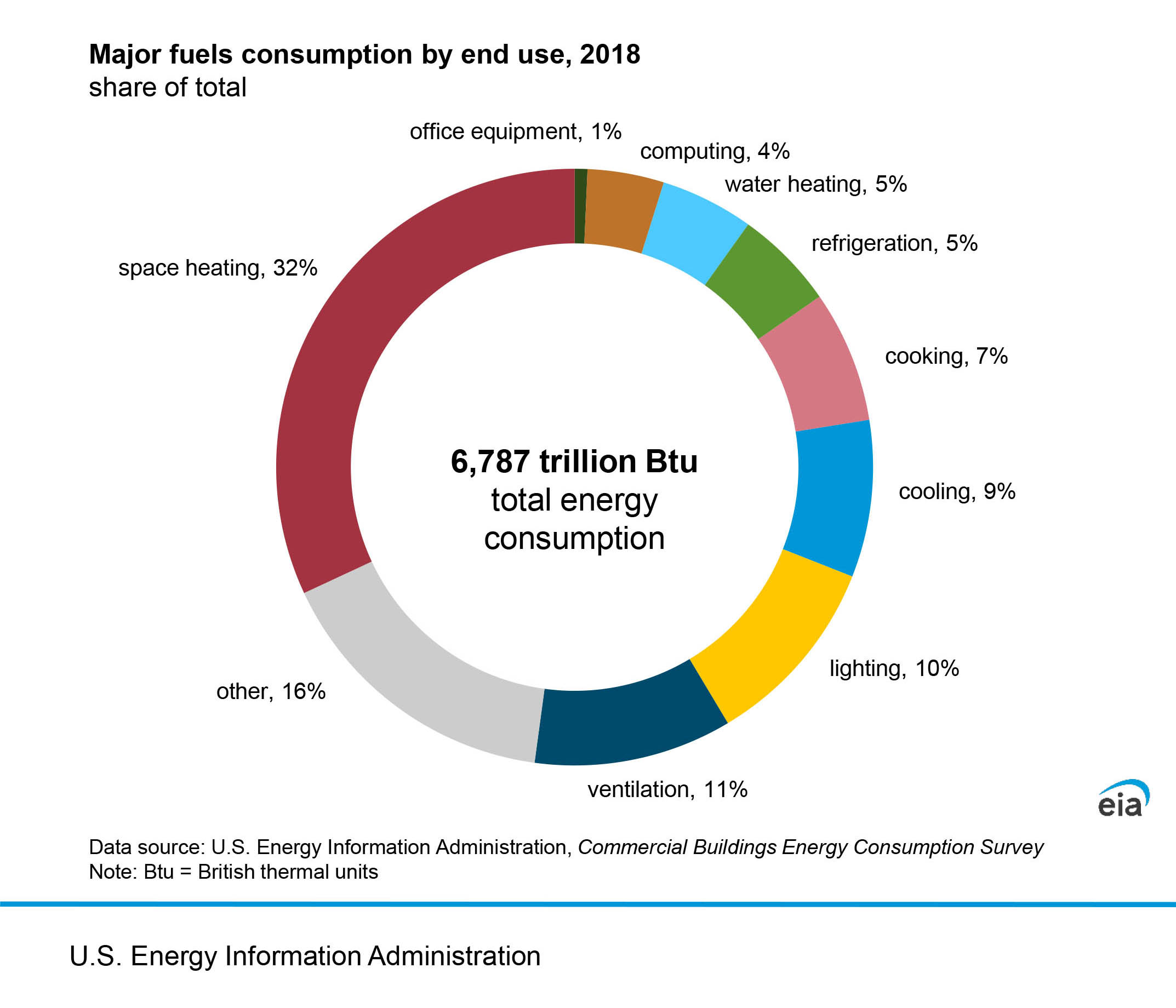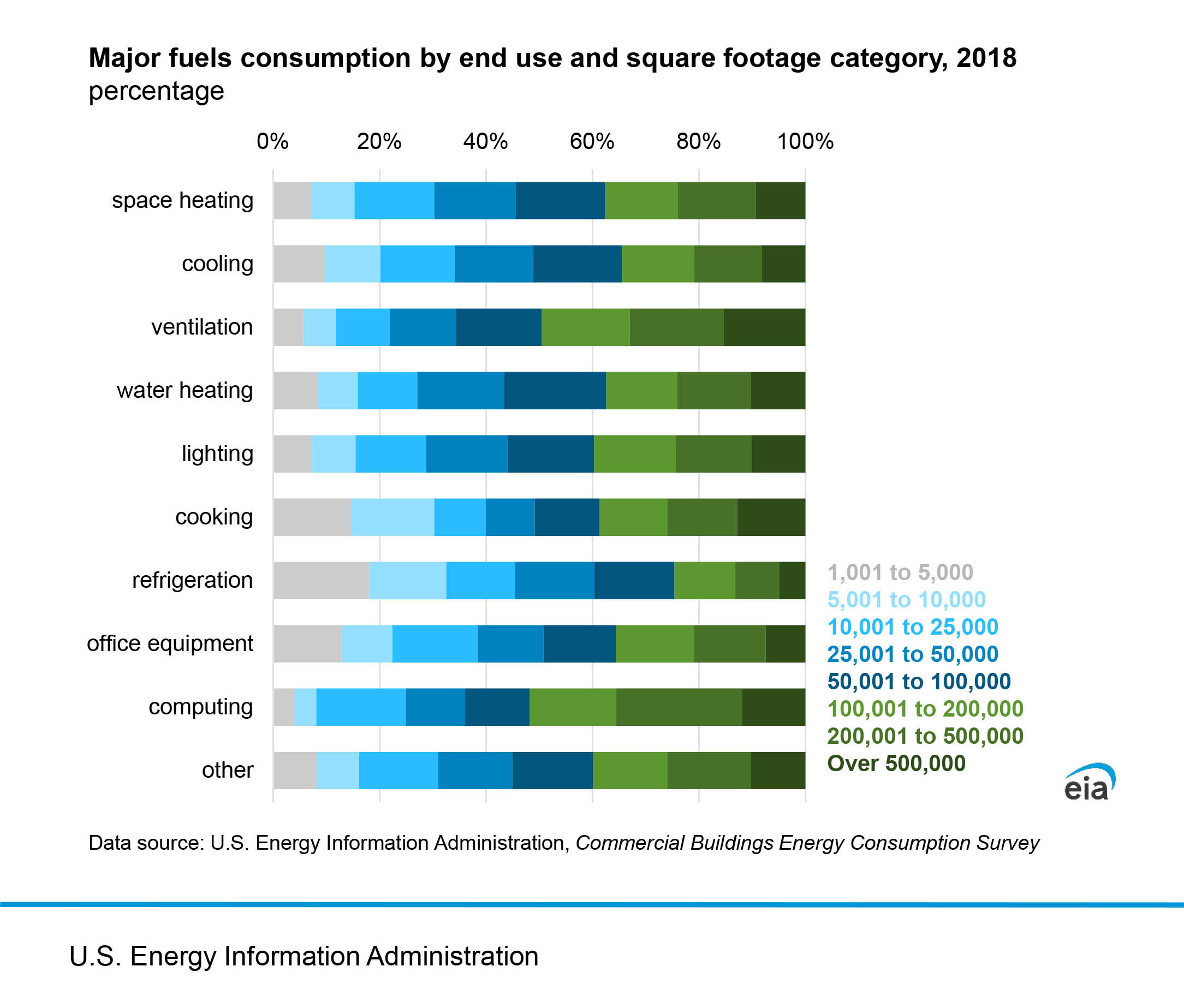Size Does Matter: The 2% Topping the Energy Charts
It turns out, size really does matter when it comes to commercial buildings. Fresh data from the Energy Information Administration reveals the heavyweights of electricity consumption in the USA. As we delved into the numbers, the findings were eye-opening. Join us as we uncover the unexpected culprits and insights from the energy landscape.
The Surprising 2%
While they only make up 2% of commercial spaces, buildings over 100,000 square feet are responsible for a whopping 39% of energy consumption. This energy appetite translates to a significant cost, with commercial buildings spending $141 billion on energy in 2018. That’s $55 billion for just 2% of structures! And with the EPA noting that 30% of energy in these structures is wasted, it’s clear there’s room for improvement.

A Closer Look at these Big Buildings
Which buildings are these? Offices and educational institutions mostly. Together, they make up almost 45% of the buildings in the 100k square foot category.

Buildings Over 100,000 Square Feet by Percentage of Building Activity. Source :https://www.eia.gov/consumption/commercial/data/2018/
Diving deeper, these large structures dominate most activity types, with hospitals being a notable exception. To tackle the energy challenge, we must first understand how energy is being used.

Percentage of Building’s by Activity & Square Feet. Source: https://www.eia.gov/consumption/commercial/data/2018/
Energy Consumption Breakdown
Space heating is the top energy consumer in commercial buildings, consuming about 32%. Other significant areas include ventilation, lighting, and various equipment. The good news? We’re seeing major strides in improving heating and lighting efficiency, especially in educational and office spaces.


The Solution: Smart Energy Automation
Take a university in Canada, for example. Given its cold climate, the university’s energy consumption, largely due to heating, is quite high. The problem? Their HVAC system runs on a fixed schedule, not aligning with actual class times. Enter PlaceOS. By integrating with both the HVAC system and class schedules, PlaceOS streamlines energy use. The result? The HVAC system’s runtime drops from 13 hours to 10 hours daily. Annually, this change leads to:
- Electricity savings: Approximately 6 MWh for one room and 4,000 MWh for the entire campus.
- Natural Gas (NG) savings: Approximately 20 MWh for one room and 18,800 MWh for the whole campus.

Pre Automation Output. Blue Line: Occupancy Pink Line: HVAC Operation. Key Data: Over Operational Hours - 6.2 Hours
The Financial Impact
Translating these energy savings to dollars, based on current rates, the university could save:
- On electricity: Roughly $436,000 annually.
- On NG: About $402,100 annually.
- In total, that’s a potential saving of approximately $838,100 each year.

Post Automation Output. Blue Line: Occupancy. Pink Line: HVAC Operation. Key Data: Over Operational Hours - 3 Hours
Emission Reductions
Furthermore, this energy efficiency also means a significant reduction in carbon footprint. Based on average emission rates, the university could reduce its CO2 emissions by around 4,947 tonnes annually.
In essence, while large buildings might dominate energy consumption charts, smart solutions like our Occupancy-Based Energy Automation are showing that we can reduce both costs and carbon footprints with a bit of innovation. The future of energy efficiency is looking brighter by the day.
Want to optimize your building’s energy consumption and reduce its carbon footprint?
Connect with our energy experts at PlaceOS and discover tailored solutions to enhance efficiency.
Reach out now and make a sustainable difference.